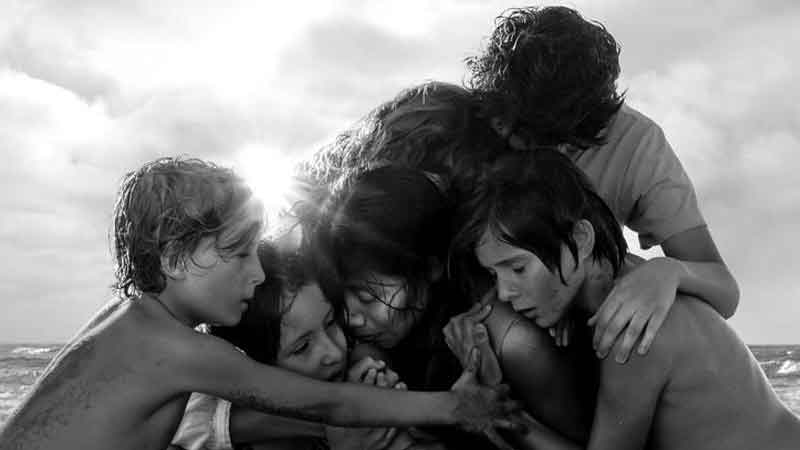Roma’s story is a reflection of director Alfonso Cuarón’s childhood memories. Read on as the man himself shares some insights on the project with Team Viva.
Roma is a beautiful film. How did you not go crazy planning every detail?
I did go crazy (laughs). Even the crew had gone crazy. Nobody knew what was there in the screenplay. I wrote a very precise script but no one had it. We shot the film in a chronological order so that the crew could learn it day-by-day about the film’s story.
So the actress who played Cleo had no idea what was going to happen? Not to give spoilers for anyone but that scene is so heartbreaking.
No, she didn’t know. Without ruining it for anyone, she doesn’t know how to swim.
The movie is stunning and moving at the same time but at the crux of it, it’s such a traditional story. What made you want to do this?
Everything comes out of my memory of Libo. She is one of the women who raised me. I decided to shoot at the places where it happened. I made people dress in the same way how they used to dress. The same cars were kept which used to be in our streets. Every extra looks like the neighbours. If the places didn’t exist anymore, we recreated them.
The lead character, Yalitza Aparicio apparently didn’t even think she was going to audition for this role. Is that true? Is she an actor?
No, she had just finished her school to become a teacher. She was not really interested. Her sister made her give the audition for the film. She came to Mexico to meet me but she didn’t know who I was so she had browse the web to know about me. She didn’t believe it was me because apparently I was healthier in the photographs. She was amazing in the film and when I offered her the role. She said, ‘I don’t have anything better to do so let’s do it’ (laughs).
How personal is this project to you?
I had the story in my mind for a very long time but in 2006, I seriously considered doing it and I am happy that I did. I don’t think I had the tools at that point. I am not just talking about the technical aspect but also the emotional sensibility to do it. But it is very personal. In a way, 90 percent of the scenes come out of my memory.
Considering Mexico city doesn’t look the same anymore, how difficult was it to recreate that period?
It was very difficult. That’s our testament to Eugenio Caballero, our production designer. It was a real challenge. The important thing was to make the memory work. We had references and photographs but more than anything it is the memory that brings all the details like the little cracks in the walls, the objects that were used. The challenge for Eugenio was to bring real occasions back to period. We shot in most of the original places and transforming some of them. Mexico is a big city but it also has a third world which has no urban setup. For one scene, we had to produce around five blocks of the city, where Eugenio Caballero had reproduced the same kind of avenue, wedding dress shop, cinema, and even pharmacy. Everything was identical.
Why did you choose to do it in black and white?
It was a part of the DNA of the film. When I decided to make the film, I didn’t want a nostalgic black and white. I didn’t want a period film.
We shot 65 mm in digital so it was in black and white that could not have been done at that time. It’s a very pristine grainless black and white. It’s a very contemporary photography to look into the past.
(Oscars will air on February 25 at 6.30 am on Star Movies and Star Movies Select HD.)
Writer: Team Viva
Courtesy: The Pioneer








 OpinionExpress.In
OpinionExpress.In















Comments (0)